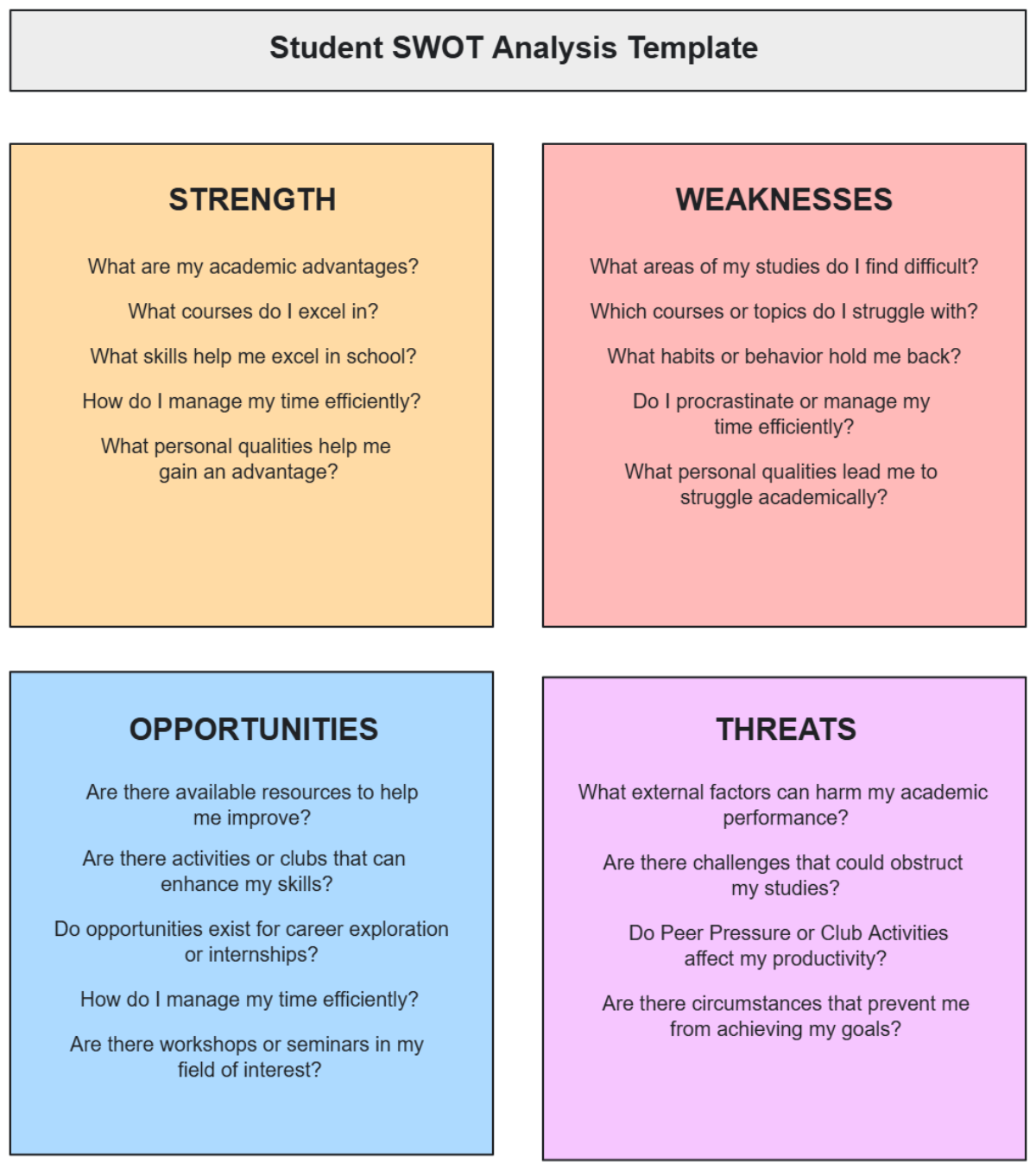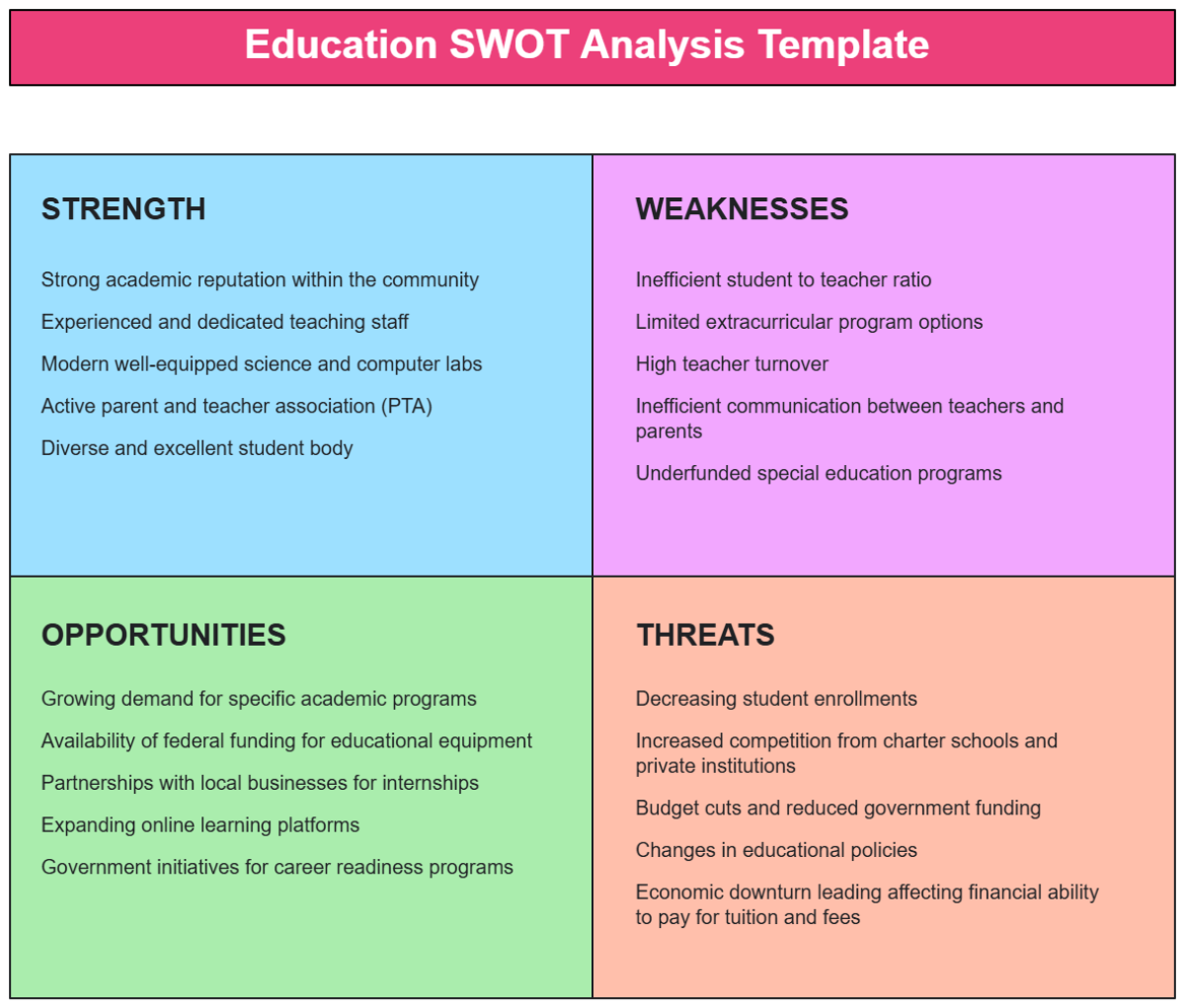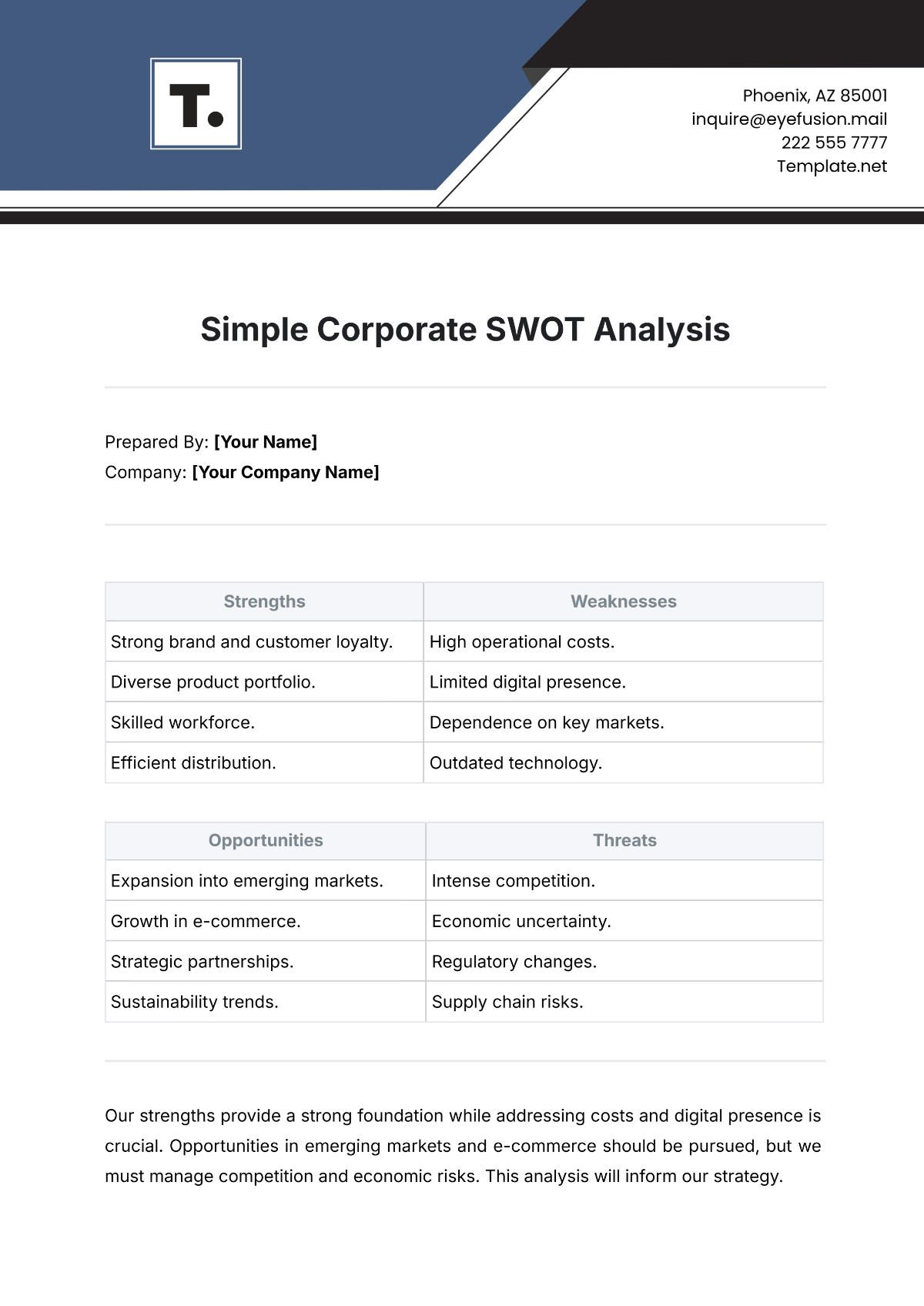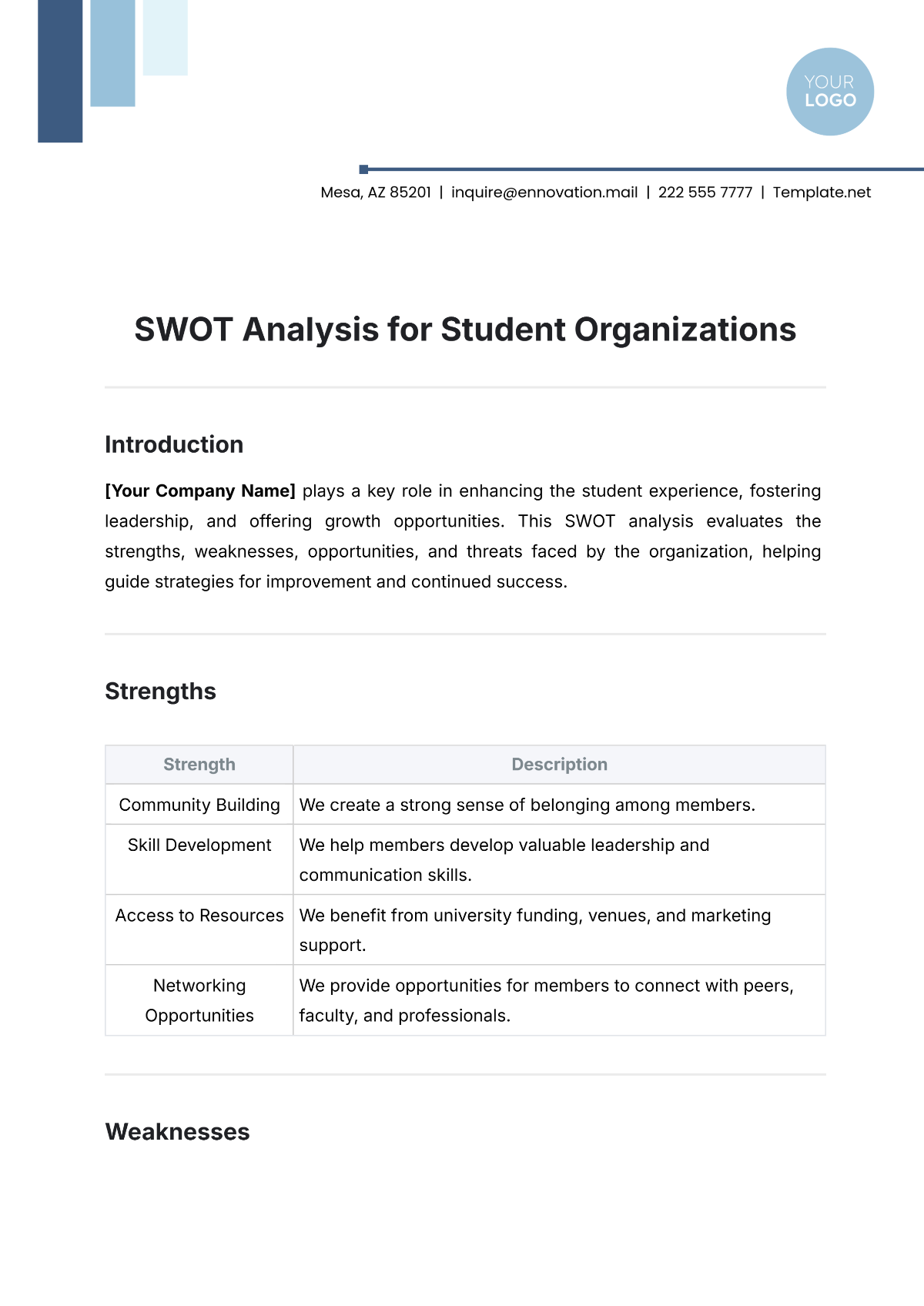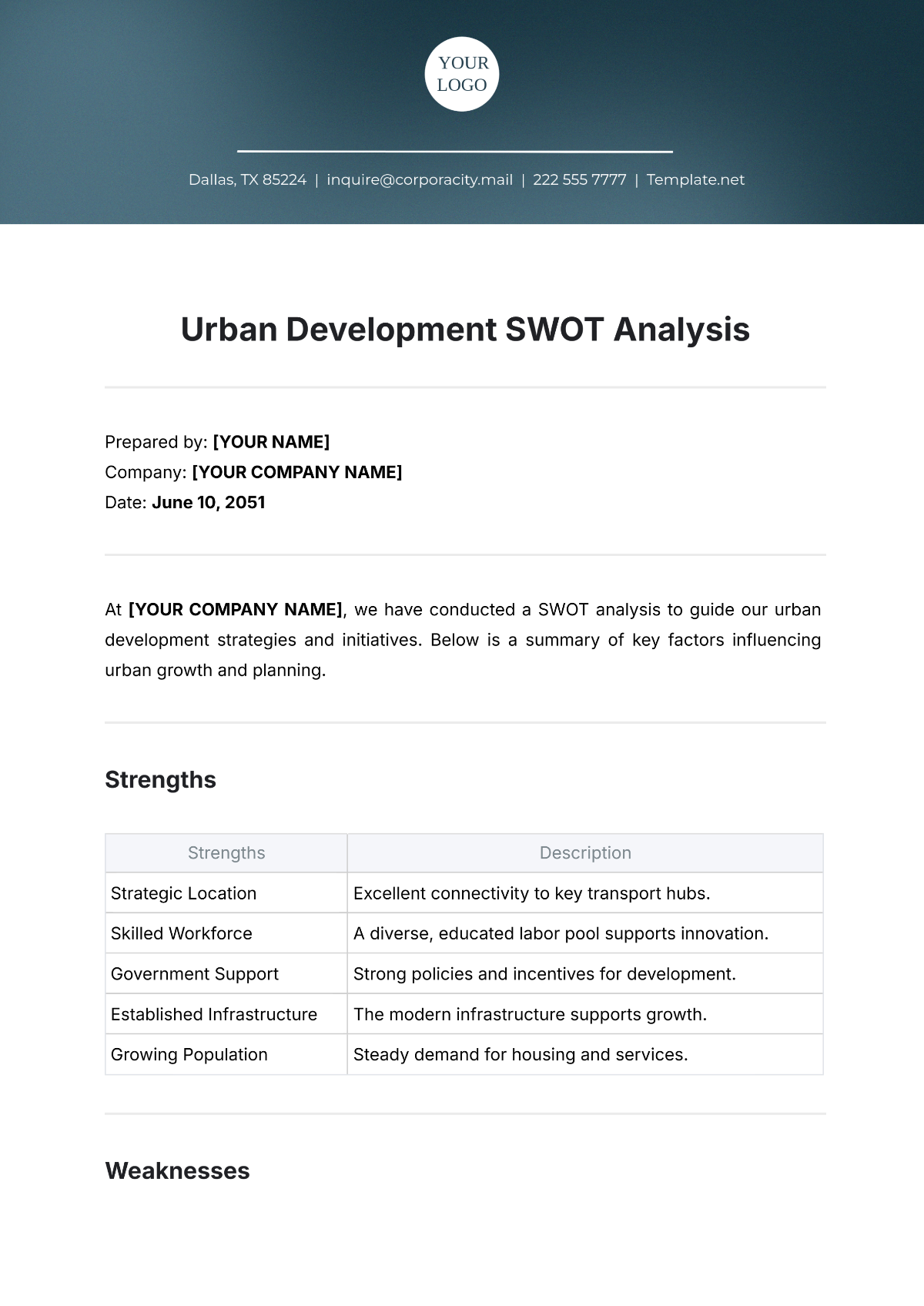Cleaning Services Safety Training SWOT Analysis
I. Objective
The aim of this SWOT Analysis is to methodically evaluate the internal and external factors influencing our cleaning company's safety training program. By examining our strengths, weaknesses, opportunities, and threats, we seek to pinpoint areas where our company excels, areas requiring improvement, and external conditions that could impact our growth and competitiveness in the safety training domain.
II. SWOT Analysis
The SWOT Analysis table presented below encapsulates a comprehensive review of the internal and external factors impacting [YOUR COMPANY NAME]'s safety training program. This analysis delineates our strengths, such as our well-established safety training program and experienced trainers, and our weaknesses, including budget constraints and inconsistent training schedules. It also explores the opportunities for growth and recognition through our commitment to safety, alongside potential threats from industry competition and regulatory changes. This structured overview aids in identifying strategic areas for enhancement and innovation in our safety training initiatives.
Strengths | Weaknesses | |
|---|---|---|
Internal Factors |
|
|
Opportunities | Threats | |
External Factors |
|
|
Strengths
Our strengths lie in the robust structure of our internal processes and resources dedicated to safety training:
Well-Established Safety Training Program: A comprehensive program that covers all necessary safety protocols, ensuring that our staff is well-prepared for various scenarios.
Regular Ongoing Training Updated with Latest Protocols: Our commitment to continuous improvement ensures that our training content remains current and relevant.
Experienced Internal Trainers with Occupational Safety Background: Leveraging the expertise of seasoned professionals who bring valuable knowledge and insights to our training sessions.
Weaknesses
Despite our strong foundation, there are areas within our internal framework that require attention:
Limited Budget for Safety Training Tools and Resources: Financial constraints limit our ability to acquire the latest training materials and technology.
Inconsistent Training Schedules Due to Workload: Fluctuating work demands lead to irregular training sessions, affecting overall program consistency.
Not All Staff are Embracing the Safety Culture: A gap in fully integrating a safety-first mindset across all levels of the workforce.
Opportunities
The external environment presents several avenues for growth and enhancement of our safety training initiatives:
Emphasis on Safety Protocols as a Unique Selling Point: Differentiating our services by highlighting our commitment to safety could attract more clients.
Partner with External Training Resources for Additional Funding and Resources: Collaborations with external organizations could provide financial and material support for our training programs.
Possibility to Receive Awards and Recognitions for Maintaining High Safety Standards: Achieving industry accolades could enhance our market reputation and validate our efforts in maintaining a high safety standard.
Threats
Several external factors pose potential challenges to our safety training program:
Increased Competition with Companies Offering Similar Services: A crowded marketplace requires us to continuously innovate and improve our safety training to stand out.
Changes in Industry Safety Regulations Can Require Additional Training: Staying abreast of regulatory changes is essential but can necessitate unexpected updates to our training programs.
Potential Increases in Insurance Costs if Safety Training is Neglected: Inadequate training can lead to higher incidents of accidents, thereby increasing our insurance premiums.
III. Action Items
The Action Items table outlines specific, targeted actions designed to leverage our strengths, address our weaknesses, capitalize on opportunities, and mitigate threats. Each action item is assigned to a responsible department with a defined timeline, ensuring accountability and structured progress. From auditing current safety training programs to reinforcing the importance of a safety culture among staff, these steps are instrumental in advancing [YOUR COMPANY NAME]'s commitment to maintaining the highest standards of safety training within the cleaning services industry.
Action Item | Responsibility | Timeline |
|---|---|---|
Audit current safety training program and tools | Training department | Within one month |
Develop consistent training schedule | Operations Team | Within two months |
Explore partnerships for additional training resources | Management Team | Within three months |
Meet with staff to reinforce importance and benefits of safety culture | Human Resources | Continuous |
To address the findings of our SWOT analysis, the following action items have been identified:
Audit Current Safety Training Program and Tools: The Training Department is tasked with evaluating our existing resources and methodologies to identify areas for improvement. This audit is scheduled to be completed within one month.
Develop Consistent Training Schedule: The Operations Team will devise a plan to establish regular and predictable training sessions, aimed at ensuring all employees receive timely and consistent safety training. This is targeted for completion within two months.
Explore Partnerships for Additional Training Resources: The Management Team is responsible for seeking out and negotiating partnerships with external entities to enhance our training program with additional resources and funding. This initiative is planned to unfold over the next three months.
Meet with Staff to Reinforce Importance and Benefits of Safety Culture: Human Resources will conduct ongoing meetings and discussions with staff to bolster the understanding and adoption of a safety-first culture across the company.
IV. Conclusion
This SWOT Analysis has provided a comprehensive overview of the internal and external factors influencing the safety training program at [YOUR COMPANY NAME]. Through identifying our core strengths, such as our robust training program and skilled trainers, and acknowledging our weaknesses, including budget limitations and scheduling inconsistencies, we have laid a solid foundation for targeted improvement. Additionally, by recognizing both the opportunities for growth and external threats, we are better positioned to navigate the competitive landscape and regulatory environment.
The subsequent action items delineated in this analysis are not merely tasks but stepping stones towards realizing our vision of a safer, more efficient workplace. By committing to these strategic initiatives, [YOUR COMPANY NAME] reaffirms its dedication to not only maintaining but elevating the standard of safety within the cleaning industry. As we move forward, the insights gleaned from this analysis will guide our efforts to foster a culture of safety that is both resilient and adaptive to change, ensuring our continued growth and success in serving our clients with the utmost care and professionalism.













